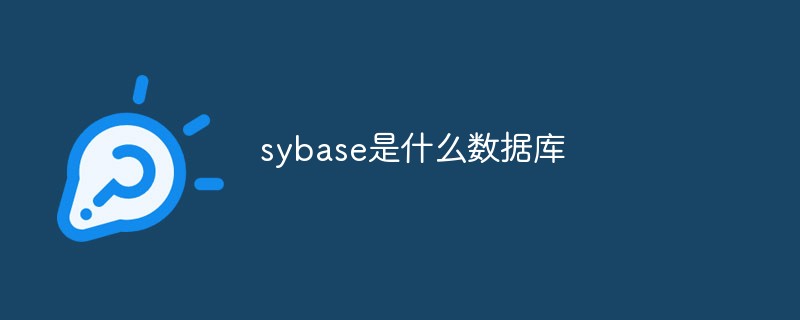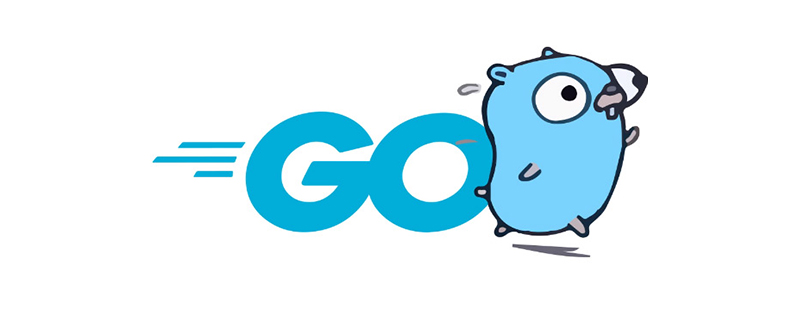 Backend Development
Backend Development Golang
Golang How to deal with concurrent database data consistency issues in Go language?
How to deal with concurrent database data consistency issues in Go language?
How to deal with concurrent database data consistency issues in Go language?
When multiple concurrent requests access the database at the same time, data consistency problems will occur. In Go language, we can use transactions and locks to deal with this problem. Below I will introduce in detail how to handle concurrent database data consistency issues in the Go language and give specific code examples.
First, we need to use the transaction mechanism of the database. Database transactions provide a mechanism for treating a series of database operations as a whole, either all succeeding or all failing. This ensures consistency in concurrent operations. In Go language, you can use transactions provided by the database/sql package.
The following is a sample code that demonstrates how to use transactions to handle concurrent database operations:
package main
import (
"database/sql"
"fmt"
"sync"
"time"
_ "github.com/go-sql-driver/mysql"
)
var (
db *sql.DB
)
func initDB() {
var err error
db, err = sql.Open("mysql", "root:password@tcp(localhost:3306)/test?charset=utf8mb4&parseTime=True&loc=Local")
if err != nil {
fmt.Printf("Failed to connect to database: %v
", err)
return
}
// Set the maximum number of connection to database
db.SetMaxOpenConns(100)
// Set the maximum number of idle connection to database
db.SetMaxIdleConns(20)
}
func updateData(id int, wg *sync.WaitGroup) {
defer wg.Done()
// Start a new transaction
tx, err := db.Begin()
if err != nil {
fmt.Printf("Failed to begin transaction: %v
", err)
return
}
// Query the current value of the data
var value int
err = tx.QueryRow("SELECT value FROM data WHERE id=?", id).Scan(&value)
if err != nil {
fmt.Printf("Failed to query data: %v
", err)
tx.Rollback()
return
}
// Update the value of the data
value++
_, err = tx.Exec("UPDATE data SET value=? WHERE id=?", value, id)
if err != nil {
fmt.Printf("Failed to update data: %v
", err)
tx.Rollback()
return
}
// Commit the transaction
err = tx.Commit()
if err != nil {
fmt.Printf("Failed to commit transaction: %v
", err)
tx.Rollback()
return
}
fmt.Printf("Update data successfully: id=%d, value=%d
", id, value)
}
func main() {
initDB()
// Create a wait group to wait for all goroutines to finish
var wg sync.WaitGroup
// Start multiple goroutines to simulate concurrent database access
for i := 0; i < 10; i++ {
wg.Add(1)
go updateData(1, &wg)
}
// Wait for all goroutines to finish
wg.Wait()
time.Sleep(1 * time.Second)
// Query the final value of the data
var value int
err := db.QueryRow("SELECT value FROM data WHERE id=?", 1).Scan(&value)
if err != nil {
fmt.Printf("Failed to query data: %v
", err)
return
}
fmt.Printf("Final value of the data: %d
", value)
}In the above code, we first connect using the sql.Open function to the database. Then, we use the db.Begin method to start a new transaction, and use the tx.QueryRow and tx.Exec methods to perform database query and update operations. Finally, we use the tx.Commit method to commit the transaction, or the tx.Rollback method to roll back the transaction. When the updateData function is called concurrently, each call will start a new transaction, ensuring data consistency. Finally, we use a simple query statement to verify that the data was updated correctly.
In addition to using transactions, we can also use locking mechanisms to ensure data consistency. In the Go language, you can use sync.Mutexmutex locks to achieve simple concurrency control. The following is a sample code using the lock mechanism to demonstrate how to ensure the consistency of concurrent update operations:
package main
import (
"fmt"
"sync"
)
var (
data = make(map[int]int)
mutex sync.Mutex
)
func updateData(id int, wg *sync.WaitGroup) {
defer wg.Done()
// Lock the mutex before accessing the data
mutex.Lock()
defer mutex.Unlock()
// Update the value of the data
value := data[id]
value++
data[id] = value
fmt.Printf("Update data successfully: id=%d, value=%d
", id, value)
}
func main() {
// Create a wait group to wait for all goroutines to finish
var wg sync.WaitGroup
// Start multiple goroutines to simulate concurrent data update
for i := 0; i < 10; i++ {
wg.Add(1)
go updateData(1, &wg)
}
// Wait for all goroutines to finish
wg.Wait()
fmt.Printf("Final value of the data: %d
", data[1])
}In the above code, we define a package-level sync.Mutex type Variable mutex. In the updateData function, we first call the mutex.Lock method to lock the mutex to prevent other concurrent operations from accessing the data. Then, we update the value of the data and finally call the mutex.Unlock method to release the mutex lock. In this way, the mutex lock ensures data consistency when the updateData function is called concurrently. Finally, we verify the final results by querying the data.
The above are methods and code examples for handling concurrent database data consistency issues in Go language. By using transactions or locks, we can ensure the consistency of concurrent database operations and avoid data inconsistency problems.
The above is the detailed content of How to deal with concurrent database data consistency issues in Go language?. For more information, please follow other related articles on the PHP Chinese website!
 深入理解MySQL索引优化器工作原理Nov 09, 2022 pm 02:05 PM
深入理解MySQL索引优化器工作原理Nov 09, 2022 pm 02:05 PM本篇文章给大家带来了关于mysql的相关知识,其中主要介绍了关于索引优化器工作原理的相关内容,其中包括了MySQL Server的组成,MySQL优化器选择索引额原理以及SQL成本分析,最后通过 select 查询总结整个查询过程,下面一起来看一下,希望对大家有帮助。
 sybase是什么数据库Sep 22, 2021 am 11:39 AM
sybase是什么数据库Sep 22, 2021 am 11:39 AMsybase是基于客户/服务器体系结构的数据库,是一个开放的、高性能的、可编程的数据库,可使用事件驱动的触发器、多线索化等来提高性能。
 visual foxpro数据库文件是什么Jul 23, 2021 pm 04:53 PM
visual foxpro数据库文件是什么Jul 23, 2021 pm 04:53 PMvisual foxpro数据库文件是管理数据库对象的系统文件。在VFP中,用户数据是存放在“.DBF”表文件中;VFP的数据库文件(“.DBC”)中不存放用户数据,它只起将属于某一数据库的 数据库表与视图、连接、存储过程等关联起来的作用。
 数据库系统的构成包括哪些Jul 15, 2022 am 11:58 AM
数据库系统的构成包括哪些Jul 15, 2022 am 11:58 AM数据库系统由4个部分构成:1、数据库,是指长期存储在计算机内的,有组织,可共享的数据的集合;2、硬件,是指构成计算机系统的各种物理设备,包括存储所需的外部设备;3、软件,包括操作系统、数据库管理系统及应用程序;4、人员,包括系统分析员和数据库设计人员、应用程序员(负责编写使用数据库的应用程序)、最终用户(利用接口或查询语言访问数据库)、数据库管理员(负责数据库的总体信息控制)。
 microsoft sql server是什么软件Feb 28, 2023 pm 03:00 PM
microsoft sql server是什么软件Feb 28, 2023 pm 03:00 PMmicrosoft sql server是Microsoft公司推出的关系型数据库管理系统,是一个全面的数据库平台,使用集成的商业智能(BI)工具提供了企业级的数据管理,具有使用方便可伸缩性好与相关软件集成程度高等优点。SQL Server数据库引擎为关系型数据和结构化数据提供了更安全可靠的存储功能,使用户可以构建和管理用于业务的高可用和高性能的数据应用程序。
 go语言可以写数据库么Jan 06, 2023 am 10:35 AM
go语言可以写数据库么Jan 06, 2023 am 10:35 AMgo语言可以写数据库。Go语言和其他语言不同的地方是,Go官方没有提供数据库驱动,而是编写了开发数据库驱动的标准接口,开发者可以根据定义的接口来开发相应的数据库驱动;这样做的好处在于,只要是按照标准接口开发的代码,以后迁移数据库时,不需要做任何修改,极大方便了后期的架构调整。
 数据库的什么是指数据的正确性和相容性Jul 04, 2022 pm 04:59 PM
数据库的什么是指数据的正确性和相容性Jul 04, 2022 pm 04:59 PM数据库的“完整性”是指数据的正确性和相容性。完整性是指数据库中数据在逻辑上的一致性、正确性、有效性和相容性。完整性对于数据库系统的重要性:1、数据库完整性约束能够防止合法用户使用数据库时向数据库中添加不合语义的数据;2、合理的数据库完整性设计,能够同时兼顾数据库的完整性和系统的效能;3、完善的数据库完整性有助于尽早发现应用软件的错误。
 mysql查询慢的因素除了索引,还有什么?Jul 19, 2022 pm 08:22 PM
mysql查询慢的因素除了索引,还有什么?Jul 19, 2022 pm 08:22 PMmysql查询为什么会慢,关于这个问题,在实际开发经常会遇到,而面试中,也是个高频题。遇到这种问题,我们一般也会想到是因为索引。那除开索引之外,还有哪些因素会导致数据库查询变慢呢?


Hot AI Tools

Undresser.AI Undress
AI-powered app for creating realistic nude photos

AI Clothes Remover
Online AI tool for removing clothes from photos.

Undress AI Tool
Undress images for free

Clothoff.io
AI clothes remover

AI Hentai Generator
Generate AI Hentai for free.

Hot Article

Hot Tools

mPDF
mPDF is a PHP library that can generate PDF files from UTF-8 encoded HTML. The original author, Ian Back, wrote mPDF to output PDF files "on the fly" from his website and handle different languages. It is slower than original scripts like HTML2FPDF and produces larger files when using Unicode fonts, but supports CSS styles etc. and has a lot of enhancements. Supports almost all languages, including RTL (Arabic and Hebrew) and CJK (Chinese, Japanese and Korean). Supports nested block-level elements (such as P, DIV),

ZendStudio 13.5.1 Mac
Powerful PHP integrated development environment

Zend Studio 13.0.1
Powerful PHP integrated development environment

SublimeText3 Chinese version
Chinese version, very easy to use

Safe Exam Browser
Safe Exam Browser is a secure browser environment for taking online exams securely. This software turns any computer into a secure workstation. It controls access to any utility and prevents students from using unauthorized resources.





